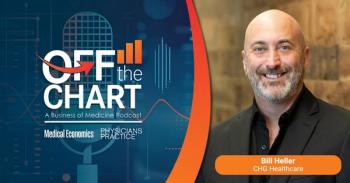
Treating insomnia: Patient management and billing advice for physicians
Follow these tips to help patients manage their sleep disorders, and ensure you are reimbursed correctly.
An estimated 50 to 70 million adults have some form of sleep or wakefulness disorder, based on reports from the United States
Adults who sleep less than the recommended 7 to 9 hours per night are more likely to report difficulty performing daily tasks. Additionally, patients with insomnia are more likely to have chronic diseases such as depression, diabetes, hypertension, and obesity. They may also suffer from increased mortality, reduced productivity, and poor quality of life.
Insomnia also carries heavy economic costs. According to the
Because the disorder can be impacted by a variety of biological, psychological, and social factors, and because most patients who have insomnia do not report their symptoms to their clinician, diagnosis and management can be challenging when a patient presents in the primary-care setting. Screening for insomnia in at-risk populations and at the occurrence of various presenting symptoms is essential to diagnose the disorder expeditiously. Furthermore, effective physician-patient communication, appropriate selection of diagnostic testing, and referral to specialty practitioners when necessary are important components of successful insomnia diagnosis and management.
Understand patient concerns. Typically, insomnia is defined simply by a patient’s report of difficulty with sleep. Most patients with insomnia tend to report nonrestorative sleep, difficulty initiating sleep, frequent waking during the night, and waking too early. Insomnia can be precipitated by a range of factors, and many symptoms are subjective.
Because the poor sleep of insomnia can leave patients stressed and anxious, it is important to help them clearly articulate their main concerns during the office visit. In addition to taking a careful medical, substance, and psychiatric history, asking questions like, “Do you have trouble falling or staying asleep?” and “How often do you wake during the night?” can help guide the discussion.
Educate patients on sleep hygiene and available treatments. The stress associated with insomnia can cause patients to experience anxiety that undermines their ability to self-manage their sleep lifestyle.
Patients may worry about the inability to sleep and the daytime consequences of poor sleep, develop maladaptive efforts to accommodate to the condition, and spend excessive time awake in bed. This last behavior can be particularly damaging because it often exacerbates anxiety and creates a pattern of wakefulness. Encourage patients to make lifestyle changes that support good sleep, including:
- keep a regular sleep schedule that offers sufficient sleep time and starts and ends at the same time every day, even non-working days,
- include regular daytime exercise and a healthy diet,
- maintain a bedroom environment that is conducive to good sleep: dimly lit room; no TV, computer, or smart phones for a few hours before bedtime,
- avoid napping, caffeine, other stimulants, nicotine, alcohol, excessive fluids, and stimulating activities before bedtime, and
- limit time spent awake in bed.
While sleep hygiene is a critical aspect of insomnia self-management, this education alone may be insufficient for the treatment of chronic insomnia. Patients may also require stimulus control, relaxation training, sleep restriction, cognitive-behavioral therapy (CBT) or medications.
Select diagnostics and treatments carefully. The
- Avoid polysomnography in chronic insomnia patients unless symptoms suggest a comorbid sleep disorder. Polysomnography in patients with insomnia is only indicated in specific circumstances: when sleep apnea or sleep-related movement disorders are suspected, the initial diagnosis is uncertain, behavioral or pharmacologic treatment fails, or sudden arousals occur with violent or injurious behavior.
- Avoid use of hypnotics for chronic insomnia in adults as initial therapy if possible; instead offer CBT, and reserve medication for adjunctive treatment when necessary. In clinical trials, CBT is generally as or more effective than prescription medications at improving sleep.
- Don’t use polysomnography to diagnose restless legs syndrome, except in instances when the clinical history is ambiguous and periodic leg movements need to be ruled out. Restless legs syndrome can typically be diagnosed based on a patient’s description of symptoms and their clinical history. Periodic leg movements occur while the patient is asleep, and has no awareness of its presence.
- Insomnia occurs in nearly 50% of patients with obstructive sleep apnea. However, there is no need to perform re-titration studies in asymptomatic, adherent sleep apnea patients with stable weight. Re-titration of positive airway pressure is not indicated for adult obstructive sleep apnea patients with stable weight whose symptoms are well controlled.
Refer when appropriate. CBT can be particularly effecting in helping patients reframe worries about insomnia and its daytime consequences and feel more empowered in their self-management skills. Referral to a specialist for CBT may be very effective. Psychologists and other clinicians with general training in CBT may have varying degrees of experience in behavioral sleep treatment, and ideally this treatment is delivered by a behavioral sleep medicine specialist. CBT is now also offered on certain websites and in group therapies.
However, there is a current shortage of trained sleep specialists, and this level of care may not be available to all patients. For the clinician interested in providing more in-depth insomnia treatment in the primary-care office, several strategies can be put into place. These might include on-site staff training and alternative methods of treatment and follow-up, such as telephone or email consultations to review patient-completed sleep logs or questionnaires. Such options may offer better access to treatment for patients who are unable to receive care from a specialist.
Patient education resources
American Academy of Sleep Medicine
National Institutes of Health
National Sleep Foundation
Sources
American Academy of Sleep Medicine. Insomnia.
American Board of Internal Medicine Foundation/American Academy of Sleep Medicine. ChoosingWisely. Five Things Physicians and Patients Should Question.
Roth T. Insomnia: Definition, Prevalence, Etiology, and Consequences. J Clin Sleep Med. 2007;3(5Suppl):S7–S10.
Wickwire EM. Financial Costs of Insomnia. Sleep Rev. Published December 2, 2014.
Schutte-Rodin S, Broch L, Buysse D, Dorsey C, Sateia M. Clinical Guideline for the Evaluation and Management of Chronic Insomnia in Adults. J Clin Sleep Med. 2008;4(5):487-504.
United States Centers for Disease Control and Prevention. Insufficient Sleep is a Public Health Epidemic.
Newsletter
Stay informed and empowered with Medical Economics enewsletter, delivering expert insights, financial strategies, practice management tips and technology trends — tailored for today’s physicians.








